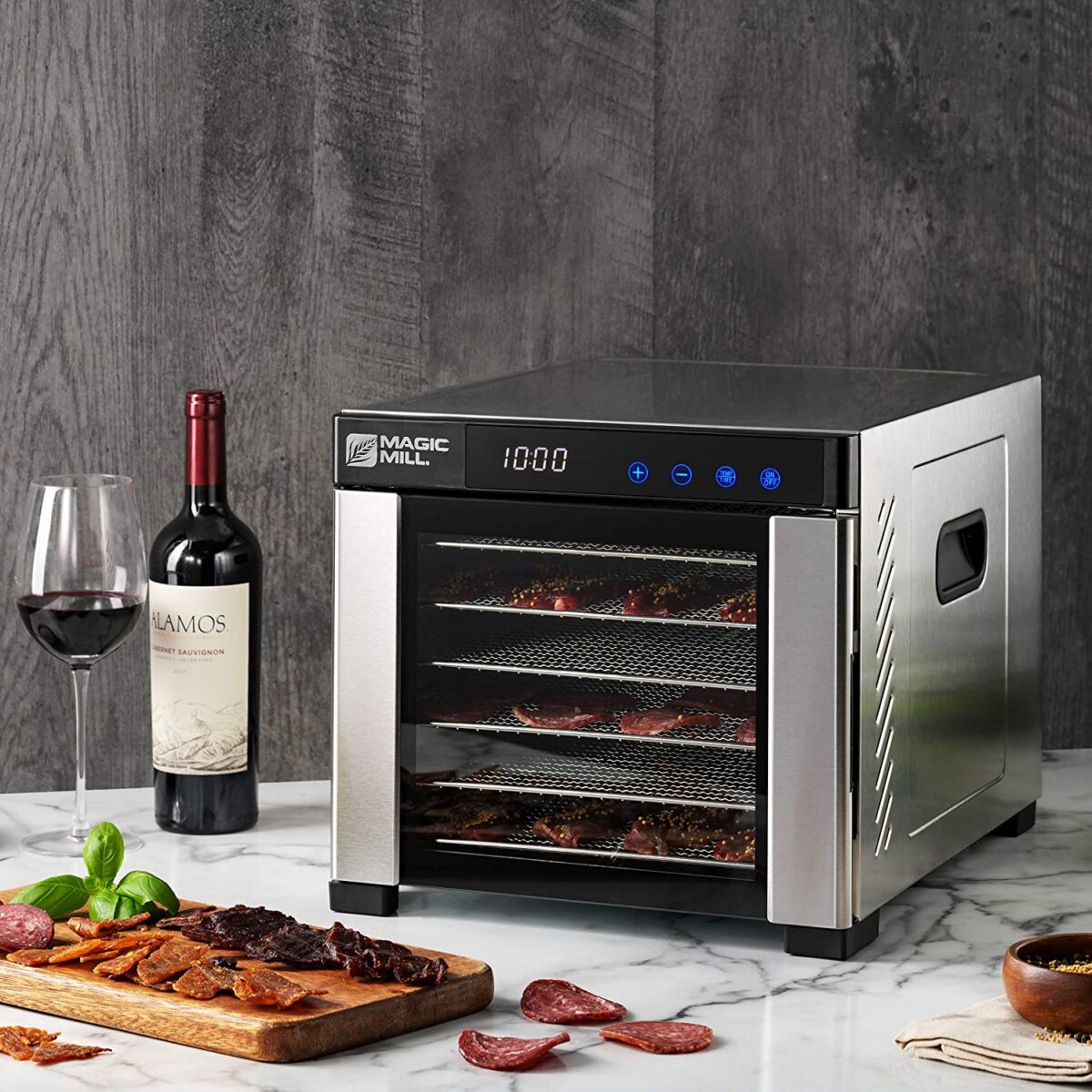
Best Dehydrators
This Old House Reviews Team
A dehydrator preserves foods like fruits and vegetables by removing their moisture and preventing the growth of harmful microbes like bacteria and mold. Dehydrating food also decreases food size, which allows you to easily store large quantities of food in a single bag or container. To help you select the dehydrator that’s right for you, the This Old House Reviews team searched for the best dehydrators on Amazon. Here are our top picks.
https://www.amazon.com/dp/B08GBY2BK8
COSORI Premium Food Dehydrator Machine
Pros
- Comes with six stainless-steel trays that are dishwasher safe
- Includes safety features like overheat protection and automatic shutoff
- Has an LED display that lets you adjust the dehydrator’s time and temperature
Cons
- Some customers had difficulty getting the dehydrator to the proper temperature
https://www.amazon.com/dp/B0090WOCN0
NESCO Snackmaster Pro Dehydrator
Pros
- Has an opaque exterior that helps block nutrient-destroying light
- Comes with a recipe book with included tips
- Contains an adjustable thermostat that ranges from 95–160°F
Cons
- Only comes with five trays
- Many customers had their dehydrator’s motor die after moderate use
https://www.amazon.com/dp/B01DI9W9ZI
Magic Mill Food Dehydrator Machine
Pros
- Cuts off automatically when the timer runs out
- Its included racks, sheets, and trays are dishwasher safe
- Includes a set of oven mitts for removing the dehydrator’s trays
Cons
- Uses a preset thermostat with only nine adjustable number increments
- Many customers stated that the dehydrator’s front sliding door cracked over time
https://www.amazon.com/dp/B07Q28MQ4X
VIVOHOME Food Dehydrator Machine
Pros
- Contains clear, BPA-free plastic trays that allow you to monitor your food while it dries
- Has a durable, stainless-steel base
- Uses dishwasher safe trays
Cons
- Features 400 watts of power, which is less than most top-performing dehydrators
- Many customers said the product gave out after minimal use
https://www.amazon.com/dp/B008OV4FD0
Excalibur 3900B 9-Tray Electric Food Dehydrator
Pros
- Has a drying guide that details the preferred temperature for vegetables, fruits, jerky, and more
- Made in the United States
Cons
- Most expensive dehydrator in this review
- Many customers heard a loud noise coming from the machine during use
Buyer’s Guide
When purchasing a dehydrator, it’s important to know how each model’s unique features and specifications affect its performance. Here are five factors to consider before buying a dehydrator.
1. Size
Dehydrators typically hold anywhere between five and 10 trays, though some models can expand to hold up to 12. The size of each tray is closely related to the dimensions of the dehydrator—the larger the dimensions of the dehydrator, the larger the trays. Additionally, having a dehydrator with multiple trays allows you to fit more food in the appliance and cook various types of foods without cross contamination.
2. Power
The amount of power a dehydrator possesses is measured in watts. The more watts a dehydrator can pull, the more power it has. Most dehydrators deliver between 400–600 watts of power. If you’re looking to dry a large quantity of food at a high temperature, look for a model with a high wattage.
3. Safety features
Safety features prevent your dehydrator from overheating or continuing to cook after the timer turns off. Some common safety features in dehydrators include overheating protection and an automatic shutoff function. Overheat protection protects the dehydrator and its motor by turning the appliance off if it reaches an unsafe temperature. Automatic shutoff works with a digital or analog timer to shut off the dehydrator after a pre-set time.
4. Temperature
Most dehydrators operate using an adjustable thermostat, though some models use preset temperatures. Owning a dehydrator that can vary in temperature lets you dry various types of foods that require different cooking temperatures. Most dehydrators dry in temperatures between 95 and 165°F.
5. Heating technique
Dehydrators typically use a horizontal or vertical heating method. A horizontal heating method, used in dehydrators like the Magic Mill Food Dehydrator Machine, pushes air from the back of the machine to the front for more uniform heat. However, these models are usually more expensive than their vertical heating counterparts.
Vertical heating dehydrators push heat from the top of the machine to the bottom, or vice versa, for a more controlled heat. Although vertical air flow dehydrators are more affordable, they’re compact and more inconsistent than horizontal airflow models.
FAQs
-
What can you use a dehydrator for?
While dehydrators can preserve fruits and vegetables, these machines also allow you to prepare a variety of foods, including beef jerky, yogurt, and flour.
-
Are dehydrated foods healthy?
Since dehydrated foods are usually free from added sugars and preservatives, they are a great source of vitamins and minerals. However, the dehydration process can destroy some of the food’s nutritional value.
-
Is it safe to dehydrate raw meat?
No. While dehydration is good for removing the harmful bacteria that causes food to spoil, the heat isn’t intense enough to kill diseases that thrive in raw meat. Therefore, cook any meat to its proper internal temperature before drying it out.
The This Old House Reviews team provides overviews of select products that are top-selling on Amazon and/or popular in consumer searches. Our team evaluates the products based on industry research, consumer reviews, pricing data, hands-on testing in select cases, and other objective criteria unique to a given product line. Unless otherwise noted, these product reviews are intended to help inform buying decisions for DIY or other non-pro users only. Editor’s picks are made by members of the This Old House Reviews team.
